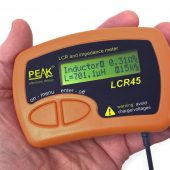Resistance, voltage and current are governed by Ohm’s law, which states that current is proportional to voltage and inversely proportional to resistance (I = V/R).
Using this formula, it’s easy, or so it seems, to determine what happens to each aspect when another changes.
Take the article title for example: if resistance increases what happens to voltage.
Because you can also write Ohm’s law as V = IR, it seems obvious that an increase in resistance results in an increase in voltage.
But that’s not the case, usually. In most circuits, voltage does not change regardless of the change in resistance. Let’s explain why.
Voltage Source Circuits
Most circuits are voltage source, meaning current is generated from a fixed-voltage device such as a battery or inverter.
Voltage measure at the terminals remains the same regardless of the resistance within the circuit.
What changes is the current.
If a resistor is introduced into the circuit, it will increase resistance and reduce current flow. But if you measure voltage at the end of the circuit, it is similar to the source voltage.
That doesn’t mean voltage isn’t affected. But it’s only affected across the resistor.
If there’s a series of resistors and the resistance of one increases, voltage measured across that particular resistor will be higher. However, overall circuit voltage remains constant.
Current Source Circuits
With a current source circuit, current is held constant regardless of voltage and resistance.
In this case, the voltage will increase when resistance increases.
Ohm’s Law
To better picture what happens in the above two scenarios, hold voltage and current constant in turn and then use Ohm’s law to see what happens each time.
With voltage constant (voltage source), an increase in resistance reduces current. Use the formula I = V/R.
Let’s say you are using a 12V source. With a resistance of 100 ohms, the current will be 0.12 amps. Let’s increase the resistance to 200 ohms. The current is now 0.06 amps, half the original current.
With current constant (current source), an increase in resistance increase voltage. Use the formula V = RI.
Let’s say you are using a 0.5 amps source. With a resistance of 100 ohms, the voltage is 50V. With resistance doubled to 200 ohms, voltage also doubles to 100V.
You can check the voltage change in all these scenarios using a voltage tester or multimeter. If the voltage increase is high enough, the voltage tester will light up more or beep louder. For smaller voltage increases or if you want to measure the precise voltage change, use a digital multimeter.



hello
QUESTION:
is voltage converted to kinetic energy for charge to move to other terminal